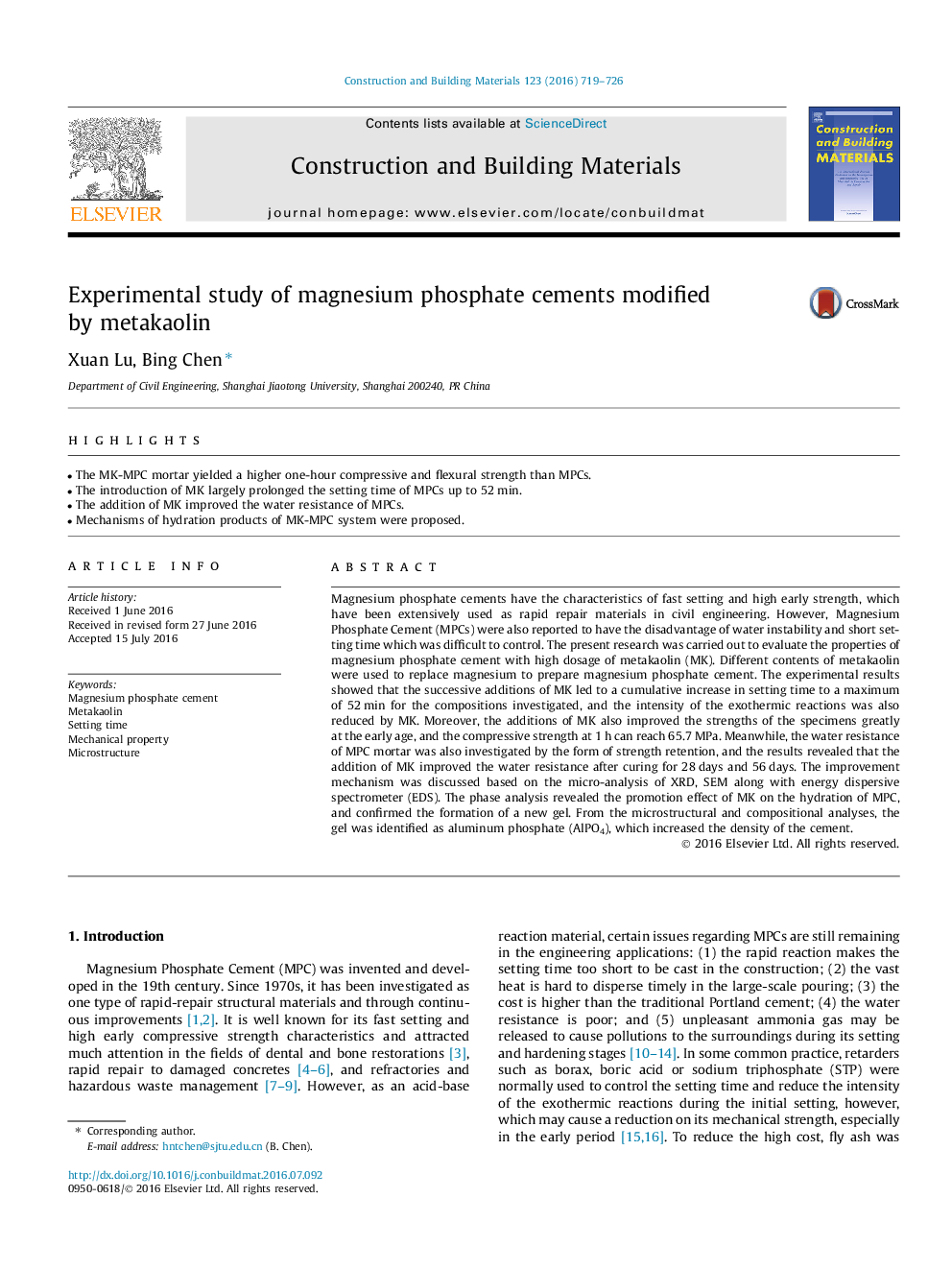| کد مقاله | کد نشریه | سال انتشار | مقاله انگلیسی | نسخه تمام متن |
|---|---|---|---|---|
| 255796 | 503530 | 2016 | 8 صفحه PDF | دانلود رایگان |
• The MK-MPC mortar yielded a higher one-hour compressive and flexural strength than MPCs.
• The introduction of MK largely prolonged the setting time of MPCs up to 52 min.
• The addition of MK improved the water resistance of MPCs.
• Mechanisms of hydration products of MK-MPC system were proposed.
Magnesium phosphate cements have the characteristics of fast setting and high early strength, which have been extensively used as rapid repair materials in civil engineering. However, Magnesium Phosphate Cement (MPCs) were also reported to have the disadvantage of water instability and short setting time which was difficult to control. The present research was carried out to evaluate the properties of magnesium phosphate cement with high dosage of metakaolin (MK). Different contents of metakaolin were used to replace magnesium to prepare magnesium phosphate cement. The experimental results showed that the successive additions of MK led to a cumulative increase in setting time to a maximum of 52 min for the compositions investigated, and the intensity of the exothermic reactions was also reduced by MK. Moreover, the additions of MK also improved the strengths of the specimens greatly at the early age, and the compressive strength at 1 h can reach 65.7 MPa. Meanwhile, the water resistance of MPC mortar was also investigated by the form of strength retention, and the results revealed that the addition of MK improved the water resistance after curing for 28 days and 56 days. The improvement mechanism was discussed based on the micro-analysis of XRD, SEM along with energy dispersive spectrometer (EDS). The phase analysis revealed the promotion effect of MK on the hydration of MPC, and confirmed the formation of a new gel. From the microstructural and compositional analyses, the gel was identified as aluminum phosphate (AlPO4), which increased the density of the cement.
Journal: Construction and Building Materials - Volume 123, 1 October 2016, Pages 719–726
